Windows High-End Protection
Posted: April 30, 2012
Threat Metric
The following fields listed on the Threat Meter containing a specific value, are explained in detail below:
Threat Level: The threat level scale goes from 1 to 10 where 10 is the highest level of severity and 1 is the lowest level of severity. Each specific level is relative to the threat's consistent assessed behaviors collected from SpyHunter's risk assessment model.
Detection Count: The collective number of confirmed and suspected cases of a particular malware threat. The detection count is calculated from infected PCs retrieved from diagnostic and scan log reports generated by SpyHunter.
Volume Count: Similar to the detection count, the Volume Count is specifically based on the number of confirmed and suspected threats infecting systems on a daily basis. High volume counts usually represent a popular threat but may or may not have infected a large number of systems. High detection count threats could lay dormant and have a low volume count. Criteria for Volume Count is relative to a daily detection count.
Trend Path: The Trend Path, utilizing an up arrow, down arrow or equal symbol, represents the level of recent movement of a particular threat. Up arrows represent an increase, down arrows represent a decline and the equal symbol represent no change to a threat's recent movement.
% Impact (Last 7 Days): This demonstrates a 7-day period change in the frequency of a malware threat infecting PCs. The percentage impact correlates directly to the current Trend Path to determine a rise or decline in the percentage.
| Ranking: | 3,126 |
|---|---|
| Threat Level: | 1/10 |
| Infected PCs: | 11,357 |
| First Seen: | April 30, 2012 |
|---|---|
| Last Seen: | March 8, 2025 |
| OS(es) Affected: | Windows |
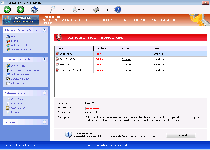 Windows High-End Protection, rather than offering any sort of protection for your PC, is a rogue anti-virus scanner that offers fake security features and security-reducing attacks in favor over nonhostile functions. However, this wouldn't come as a surprise to anyone who's as familiar with the FakeVimes family as SpywareRemove.com malware analysts are since Windows High-End Protection is easily identified as a clone of other members of that scamware group. Windows High-End Protection's main intent is to defraud you of money by alarming you with fake warning messages about PC attacks or infections, but secondary traits in a Windows High-End Protection infection, such as browser redirects or blocked application access, should also be considered security issues of paramount importance. Since these side effects can result in your PC being vulnerable to other attacks that can cause even more damage than Windows High-End Protection itself, it's suggested that you delete Windows High-End Protection once you have anti-malware software to do so with optimal safety and convenience.
Windows High-End Protection, rather than offering any sort of protection for your PC, is a rogue anti-virus scanner that offers fake security features and security-reducing attacks in favor over nonhostile functions. However, this wouldn't come as a surprise to anyone who's as familiar with the FakeVimes family as SpywareRemove.com malware analysts are since Windows High-End Protection is easily identified as a clone of other members of that scamware group. Windows High-End Protection's main intent is to defraud you of money by alarming you with fake warning messages about PC attacks or infections, but secondary traits in a Windows High-End Protection infection, such as browser redirects or blocked application access, should also be considered security issues of paramount importance. Since these side effects can result in your PC being vulnerable to other attacks that can cause even more damage than Windows High-End Protection itself, it's suggested that you delete Windows High-End Protection once you have anti-malware software to do so with optimal safety and convenience.
Windows High-End Protection – the Latest Crest of a Tide of Fraudulent Software
Windows High-End Protection belongs to the same group of fake security programs (identified as Win32/FakeVimes) and has many other clones such as Privacy Guard Pro, Extra Antivirus, Fast Antivirus 2009, Presto TuneUp, Windows Security Suite, Smart Virus Eliminator, Packed.Generic.245, Volcano Security Suite, Windows Enterprise Suite, Enterprise Suite, Additional Guard, Live PC Care, PC Live Guard, Live Enterprise Suite, Security Antivirus, My Security Wall, CleanUp Antivirus, Smart Security and PrivacyGuard Pro 2.0. Like each of its close relatives, Windows High-End Protection isn't capable of detecting real PC threats, but this crippling deficiency doesn't even slow down Windows High-End Protection's poor attempts at displaying fake security information via pop-ups, taskbar notices and system scans. Because Windows High-End Protection is designed to make you believe that your PC is endangered by nonexistent infections and attacks, SpywareRemove.com malware researchers always encourage complete disregard for security information from Windows High-End Protection, which can only harm your PC if taken at face value.
From this, one might expect that actually buying Windows High-End Protection would be a bad idea, and nothing could be closer to the truth. Besides the direct loss of money that Windows High-End Protection entails, SpywareRemove.com malware research team also warns that Windows High-End Protection may open up related financial information to future abuse and fraudulent charges by criminals linked to Windows High-End Protection and the rest of the Win32/FakeVimes-based scamware family. As a caveat, however, using free codes, such as the widely-distributed '0W000-000B0-00T00-E0020,' to fake Windows High-End Protection's registration is not harmful to your computer and may make removing Windows High-End Protection somewhat less arduous than usual. Afterwards, any good anti-malware application should be able to delete Windows High-End Protection safely.
Why Kicking Windows High-End Protection Out Should Foremost on Your List of Things to Get Done
Unfortunately, Windows High-End Protection's fake security histrionics aren't its only functions, which can include a range of other features that directly hinder your PC's security programs and features. Other attacks by Windows High-End Protection that SpywareRemove.com malware researchers warn you to watch for include:
- Disabled UAC features – a Windows utility that prevents undesirable changes from being made to your PC without your consent.
- Disabled anti-malware and security programs, including basic Windows applications like Task Manager. If Windows High-End Protection blocks a program that you need to use to remove Windows High-End Protection appropriately, disabling Windows High-End Protection by using Safe Mode or a system boot from a remote hard drive are both viable solutions.
- Browser hijacks that redirect you to suspicious search engine websites (presumably so that Windows High-End Protection's criminal partners can benefit from easy Pay-Per-Click revenue).



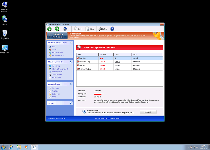
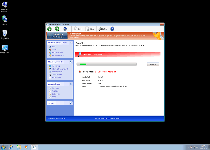
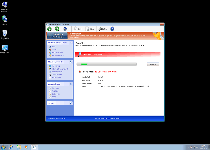
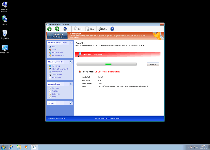
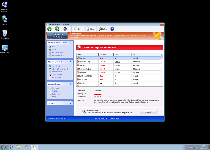
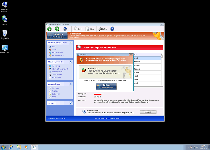

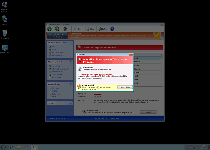
Leave a Reply
Please note that we are not able to assist with billing and support issues regarding SpyHunter or other products. If you're having issues with SpyHunter, please get in touch with SpyHunter customer support through your SpyHunter . If you have SpyHunter billing questions, we recommend you check the Billing FAQ. For general suggestions or feedback, contact us.